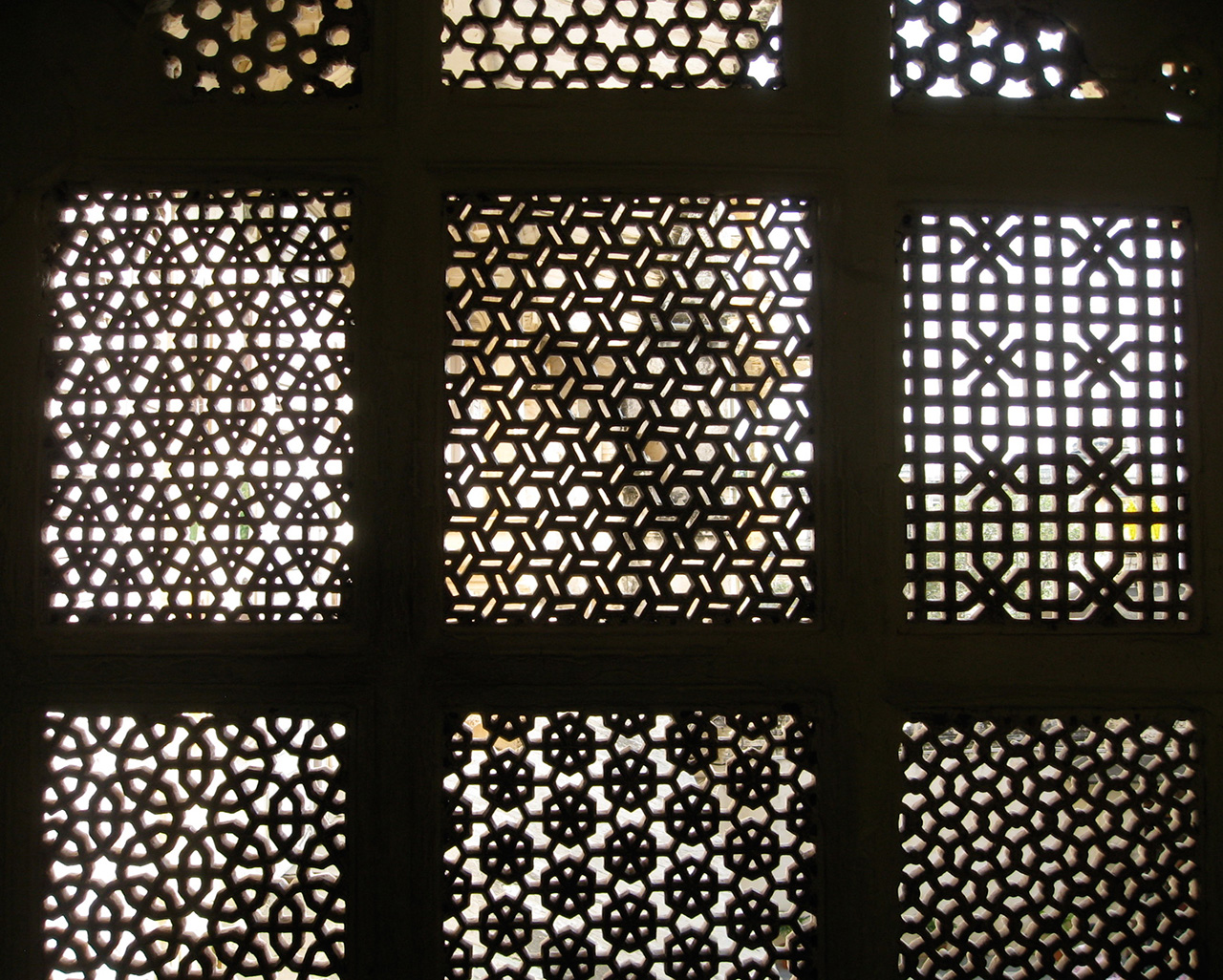
Anyone who has visited Delhi or Agra will be astounded by the sheer magic of Mughal architecture. And though there are many aspects of design and layout that can be elaborated, I personally was fascinated by the jali screens that make up a substantial part of the sub-continents’ architectural structures and designs. There is almost something surreal while viewing a jali and its simple intricacies. The perforated screen touches a delicate chord with its viewer and stands out for its duality amidst solid concrete structures.

The first thoughts invoked are of magical disbelief. Somewhere I wondered the jali to be made of thin translucent films of sheets that would probably shrug with a strong bout of wind. Of course, your imagination can waver when looking at exquisite art and architectural structures, but the fact that jalis have always been traditionally made on stone or marble can quite literally take your breath away. Because the jali architecture is, not only, a beautiful sight to behold but its real artistry lies in its ability to have multiple functional values.
The Science Jali Architecture

Backed with a strong scientific understanding the jali works on two important principles of physics. The Venturi effect is the reduction in pressure of fluid or air that is caused when it passes through a narrow or constricted section. Bernoulli’s principle on the other hand, states that an increase in speed of fluids or air also leads to a decrease in pressure. This means that as air moves through the narrow designs or cuts on the screened structures, the speed of the air increases and hence the air passing through becomes cool.
It is because of this scientific concept that spaces within the jalis are relatively cooler than the outsides.
Jali Architecture and Socio-cultural Importance
Besides, the wind factor, the jali cuts out the direct glare of the sun and light. While from within the jali one can view the happenings outside, those standing on the outside do not get a clear view of the inside. This allows the jali to be a perfect privacy provider, at the same time not cutting off those within with the world outside.

The jali thus, acted as the perfect screen for the women of both the Mughal and Rajasthani royals. The designs flourished the most during the 16th to 18th century in northern India and became a medium for the women to access and view the outside life without prying eyes invading their privacy. The lattice screens were used as window screens or dividers within rooms for queens, princess and other women of the household. The jali was thus a purdah in its own right, as seen in the Hawa Mahal.

The jali was also extensively used around cenotaphs and tombs. The beautiful jali designs at the tomb of Salim Chisti in Fatehpur Sikri and the marble jali inside the Taj Mahal are classic examples of Islamic designs and motifs. Similarly, the jali also finds its place in mosques and is used for not only artistic or aesthetic reasons, but also, expounding Islamic patterns and calligraphy.

However, the jali has been a popular device till date in various interior and exterior designs. Whether it be on balconies, platforms, terraces or even as decorative screens, the jali has continued to find its way in our homes and interiors quite seamlessly. Even today jalis are used as partitions, for separating spaces or units, as wall panels, on ceilings, on furniture and also as ornamental accessories.
Jali in Modern Architecture

The jali remains one of the most poignant tools that balances itself between open windows and concrete complete walls. It plays on subtleness, elegance and a sense of being right there, but not quite there too. Its origin and evolution are not clear, but it has been extensively used in the Indian subcontinent, including in the southern Indian areas of Kerala and Konkan too.

Though the designs and patterns differ from region to region, the essence of the artistry remains intact. Some call it poetry in stone, whereas, for some the designs invoke a sense of wonder and awe. The interplay of light and shadow, of the cool and humid, of the public and private are opposing emotions juxtaposed together. And though the jali is probably functional in our homes, offices and everywhere around us, its grandeur and delicacy is unmistakably vibrant in its erstwhile treatment by the royals. The mesmerizing tenderness that carves its way in the heart of stone and marble leaves an impression of priceless simplicity coupled with opulence.

Let me end here on an honest note. I set out thinking to write about the history and detailing of the jali architecture work in India, but as images of these exquisite pieces from the architectural stalwarts of Delhi, Agra, Fatehpur Sikri and Jaipur pass on my screen and memory, I couldn’t help not elaborating on its magnificence and splendor. The detailing of the craft is by passed by the grandeur of the art itself. Perhaps another example of how the jali is a blend of so many emotions and hopes, even if they are sometimes contrary to each other.






Very informative article on jali architecture. A lot is seen in bohra houses of sidhpur also.
Thanks for reading Radiya 🙂
The functional analysis of this style is spot on. One more point you could add is – cutting out the intense glare during the scorching summers in a semi desert region. That’s why you don’t see much of it in humid coastal regions.
Hey Zoyab, thanks for the additional point!